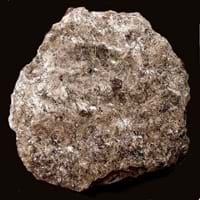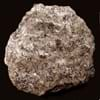Definition
Schist is a medium grade metamorphic rock with medium to large, flat, sheet like grains in a preferred orientation
Peridotite is a dense, coarse-grained plutonic is the main constituent of the earth's mantle
Origin
Unknown
Pike County, U.S
Discoverer
Unknown
Unknown
Etymology
From French schiste, Greek skhistos i.e. split
From French, from peridot + -ite
Class
Metamorphic Rocks
Igneous Rocks
Sub-Class
Durable Rock, Medium Hardness Rock
Durable Rock, Medium Hardness Rock
Group
Not Applicable
Plutonic
Other Categories
Coarse Grained Rock, Fine Grained Rock, Medium Grained Rock, Opaque Rock
Coarse Grained Rock, Opaque Rock
Texture
Foliated, Platy
Phaneritic
Color
Black, Blue, Brown, Dark Brown, Green, Grey, Silver
Dark Greenish - Grey
Durability
Durable
Durable
Appearance
Layered and Shiny
Rough and Shiny
Interior Uses
Decorative Aggregates, Floor Tiles, Interior Decoration
Decorative Aggregates, Interior Decoration
Exterior Uses
Garden Decoration, Paving Stone
As Building Stone, As Facing Stone, Garden Decoration
Other Architectural Uses
Not Yet Used
Curbing
Construction Industry
As Dimension Stone, Building houses or walls, Cement Manufacture, for Road Aggregate, Roadstone
As Dimension Stone, Cobblestones
Medical Industry
Not Yet Used
Not Yet Used
Antiquity Uses
Artifacts
Monuments, Sculpture, Small Figurines
Commercial Uses
Used in aquariums, Writing Slates
Creating Artwork, Gemstone, Jewelry, Source of Chromite, Platinum, Nickel and Garnet, Source of Diamonds
Types
Mica Schists, Calc-Silicate Schists, Graphite Schists, Blueschists, Whiteschists, Greenschists, Hornblende Schist, Talc Schist, Chlorite Schist, Garnet Schist, Glaucophane schist.
Dunite, Wehrlite, Harzburgite, Lherzolite and Pyrolite
Features
Easily splits into thin plates, Smooth to touch
Constitutes upper part of the Earth's mantle, Generally rough to touch, Host rock for Diamond, Is one of the oldest rock
Archaeological Significance
Monuments
Not Yet Used
Used
Famous Monuments
Not Applicable
Data Not Available
Sculpture
Not Yet Used
Used
Famous Sculptures
Not Applicable
Data Not Available
Figurines
Not Yet Used
Used
Formation
Schist formed by dynamic metamorphism at high temperatures and pressures that aligns the grains of mica, hornblende and other elongated minerals into thin layers.
Peridotites can be formed in two ways: as mantle rocks formed during the accretion and differentiation of the Earth or as cumulate rocks formed by precipitation of olivine and pyroxenes from basaltic magmas.
Mineral Content
Alusite, Amphibole, Biotite, Chlorite, Epidote, Feldspar, Garnet, Graphite, Hornblade, Kyanite, Micas, Muscovite or Illite, Porphyroblasts, Quartz, Sillimanite, Staurolite, Talc
Amphibole, Chromite, Garnet, Magnesium, Olivine, Phlogopite, Plagioclase, Pyroxene
Compound Content
CaO, Carbon Dioxide, MgO
Ca, Fe, Mg, Potassium, Silicon Dioxide, Sodium, Titanium Dioxide
Types of Metamorphism
Not Applicable
Burial Metamorphism, Cataclastic Metamorphism, Contact Metamorphism, Hydrothermal Metamorphism, Impact Metamorphism, Regional Metamorphism
Types of Weathering
Biological Weathering, Chemical Weathering, Mechanical Weathering
Biological Weathering, Chemical Weathering, Mechanical Weathering
Types of Erosion
Chemical Erosion, Coastal Erosion, Glacier Erosion
Chemical Erosion
Grain Size
Medium to Fine Coarse Grained
Coarse Grained
Fracture
Conchoidal
Irregular
Porosity
Highly Porous
Less Porous
Compressive Strength
Not Available
Specific Gravity
2.5-2.9
3-3.01
Transparency
Opaque
Translucent to Opaque
Density
2.8-2.9 g/cm3
3.1-3.4 g/cm3
Specific Heat Capacity
Not Available
Resistance
Impact Resistant, Pressure Resistant, Water Resistant
Heat Resistant, Pressure Resistant, Wear Resistant
Deposits in Eastern Continents
Asia
Afghanistan, Bangladesh, Bhutan, China, India, Japan, Kazakhstan, Malaysia, Pakistan, Russia, Thailand, Turkey, Vietnam
China, India, Indonesia, Kazakhstan, Russia, South Korea, Thailand, Turkey
Africa
Egypt, Ethiopia, Morocco, Nigeria, South Africa
Morocco, South Africa
Europe
Austria, England, France, Georgia, Germany, Italy, Liechtenstein, Monaco, Norway, Slovenia, Spain, Sweden, Switzerland
Finland, France, Georgia, Germany, Great Britain, Italy, Kazakhstan, Netherlands, Norway, Spain, Switzerland, Venezuela
Others
Not Yet Found
Not Yet Found
Deposits in Western Continents
North America
Canada, Costa Rica, Cuba, Mexico, Panama, USA
Canada, USA
South America
Brazil, Colombia, Guyana
Brazil
Deposits in Oceania Continent
Australia
New South Wales, New Zealand, Queensland
New Zealand, Western Australia










